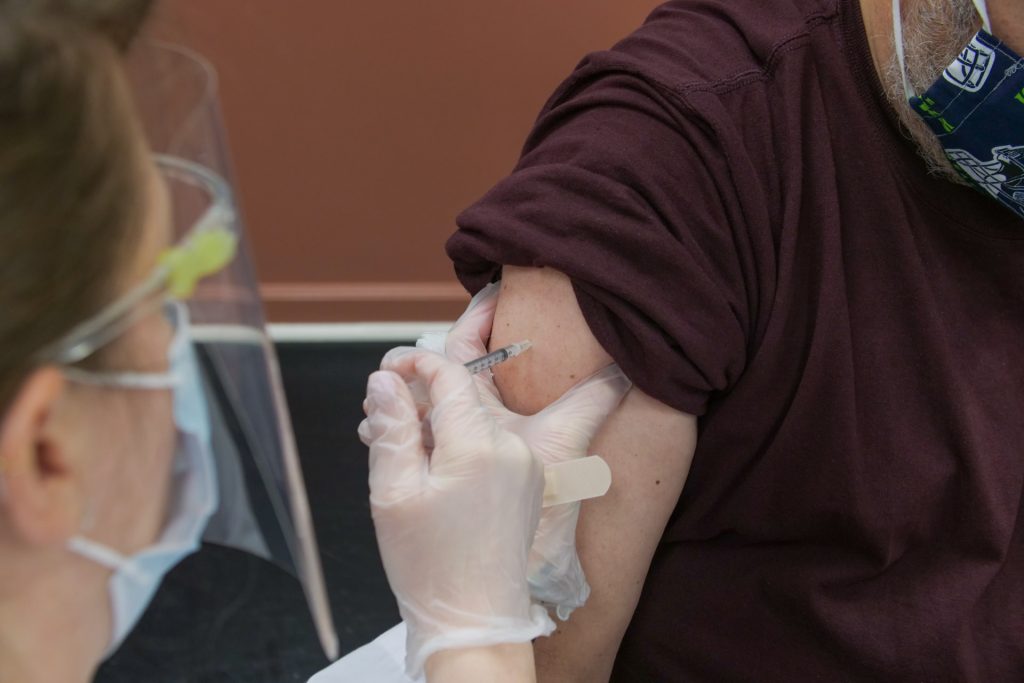One of the most significant questions that society has debated throughout the pandemic is the safety, efficacy, and necessity of vaccines. However, vaccine hesitancy and opposition have long existed, dating back to the 18th century.
As society and science evolve, and information circulates the World Wide Web, many still question why we need vaccines instead of relying on natural immunity. Or they theorize that vaccines have severe long-term side effects that are worse than the diseases they prevent.
But how did the anti-vax movement start? Find out below.

History of the Anti-Vax Movement
1700s
The world’s first successful vaccine, Edward Jenner’s smallpox vaccine, came to be in 1796. But the anti-vax movement started way before that. Variolation — which involved deliberately infecting a person with smallpox by blowing dried smallpox scabs into their nose to make them contract a mild form of the illness — was long practiced in China, India, Africa, and the Ottoman Empire to prevent the spread of that disease.
History says that Lady Montagu brought this practice to England in 1717 after witnessing variolation in Turkey. She recommended that the government inoculate children to protect them from smallpox, triggering an intense debate between pro-inoculators and anti-inoculators.
1800s
The smallpox vaccine, developed by Jenner, replaced the practice of variolation at the turn of the century. But it faced much opposition. In 1853, to counter the slow uptake of vaccinations, the British Parliament passed the “Vaccination Act.” This required infants to get the vaccine against smallpox. However, this saw much opposition. In 1885, more than 80,000 people marched through Leicester in protest of this mandatory vaccination.
Opposition against the smallpox vaccine spread to the United States and Canada. Examples of anti-vaccine groups formed included the Anti-Vaccination Society of America (formed in 1879), the New England Anti-Compulsory Vaccination League (1882), and the Anti-Vaccination League of New York (1885).
Those who were against the smallpox vaccine claimed it wasn’t effective. They said it made people sick, it contained harmful chemicals, and that mandatory vaccinations were like medical tyranny. They instead advocated for alternative medical practices.
But eventually, the success of the vaccine outweighed the protests. After the smallpox epidemic, wherein 50 million people became sick and approximately 10 million died, and an extensive vaccine campaign by the WHO to end the disease, smallpox was eradicated globally around 1978.
1900s
Thanks to the advancement of science and technology, science created and rolled out more vaccines between the 19th and early 20th centuries. This included the diphtheria vaccine (1920s), pertussis or whooping cough (1943), polio (1955), measles (1963), mumps (1967), and rubella (1971).
But just as the number of vaccines increased, so did the skeptics. For example, a 1974 study claimed that 36 children who received the vaccine against tetanus, diphtheria, and pertussis developed neurological complications within the first 24 hours of getting the shot. This received extensive media coverage, which led to protests across the UK and a significant decline in vaccination rates — all while a pertussis outbreak was occurring in the UK, infecting over 100,000 people.
Between the 1980s and late 1990s, the anti-vax movement gained credibility through celebrities and popular personalities (today’s “influencers”). Some of them did not have medical backgrounds or experience. One example is Lea Thompson’s 1982 documentary “DPT: Vaccine Roulette.” This claimed that many childhood disabilities were linked to the DTaP vaccine. Medical experts and health officials at the time stood by the vaccine. They stated that the documentary hyped the risks of the vaccines and ignored the grave dangers of the diseases. One of the landmark studies of the anti-vax movement is the infamous 1998 study by Andrew Wakefield. He stated that the measles, mumps, and rubella (MMR) vaccine increased children’s chances of developing neurological conditions like autism.

Journalist Brian Deer helped prove that Wakefield’s study had fraudulent results. It was also tainted with methodological, financial, and ethical misconduct, including conflicts of interest and minors subjected to unnecessary procedures. Deer’s book “The Doctor Who Fooled the World” revealed these findings. Wakefield had his medical license revoked. And in 2010, The Lancet, the journal that published Wakefield’s study, retracted the paper.
2000s
The internet helped fuel the spread of anti-vaccine beliefs without the tethers of traditional forms of media. People gained all sorts of information from blogs, videos, and social media posts. Many of them are not necessarily factual or verified. The anti-vax movement reached a peak during the coronavirus pandemic.
Anti-Vax Movement During the COVID-19 Pandemic
Information quickly travels online, regardless of its accuracy and credibility. Misinformation and disinformation about COVID-19 vaccines ran rampant. And theories range from long-term side effects to DNA alterations and microchip tracking.
The new COVID-19 vaccines, alongside the stringent safety practices to mitigate the spread of the virus, such as the mandatory wearing of face masks and social distancing, prompted heated discussions that went beyond empirical data, concerning ethics, morality, and free will.

Navigating the Anti-Vax Movement
Ultimately, the science behind the vaccine is solid, with extensive data on its safety and effectiveness. While most vaccines do come with side effects, the tried-and-tested benefits have, time and again, proven to outweigh the risks of being unvaccinated. If you want to have a constructive conversation with someone skeptical about vaccines, a 2021 paper published in The Lancet suggests a more inclusive approach that leverages open-minded dialogues and contextual understanding.













